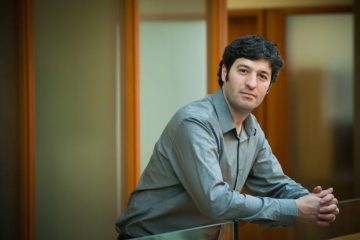
Many home electronics, such as your computer, or anything else that uses a battery, run on direct current (DC). These devices use a converter to transform the alternating current (AC) supplied at the wall socket into the DC they need. Big data centers and telecommunications also use DC. The proliferation of these devices has increased global electricity consumption by 27% in the past decade, and DC use is projected to increase even further with the addition of 20 million battery-powered electric vehicles by 2020.
Large power companies supply AC because it is much more compatible with the centralized distribution system we have used for the past century. Unfortunately, conversion from alternating to direct current inevitably results in losses in power, so each time you charge your computer or car from an AC source, there is some loss of efficiency.
As we increase our use of DC, we are also trying to increase the use of localized, renewable energy sources, such as solar power, and there is serendipity that can be leveraged in these two trends. Renewable energy sources most efficiently supply DC. Renewable energy can be supplied straight to a device, bypassing the larger power infrastructure and eliminating loss from conversion while reducing demand on an overtaxed power grid. We are already doing this on a small scale by using a dedicated solar panel to charge a laptop, for example.

Dr. Ordonez, Canada Research Chair – Power Converters for Renewable Energy Systems, is taking the idea of a device with a dedicated solar panel to the scale of a whole building. By considering the home, office or factory as a single unit that has the capacity to generate, store and distribute DC, Dr. Ordonez is able to integrate renewable energy, in a practical way, into our daily lives. His research and teaching program focuses on the use of a novel, building-scale energy architecture to connect renewable energy generation available on-site with all of the energy loads in the building. The short-term objective is to enable DC infrastructure within buildings to incorporate DC renewable generation and storage technologies (e.g. PV solar, batteries, and fuel cells) and to supply the increasing quantity of DC powered equipment directly. The elimination of conversion stages (DC/AC and AC/DC) will maximize building efficiency. It will also reduce carbon emissions by decreasing the demand on the centralized power system, which is powered largely by coal or natural gas.
From the home or business owner’s point of view, the building’s power architecture will enable more DC power generation and storage (solar, batteries, fuel cells, etc.) which will, in turn, facilitate the integration of the next generation of high efficiency DC equipment, such as LED lighting, EV chargers and heating/cooling equipment. From the power company’s perspective, the building-scale energy system will have a perfectly balanced energy use profile. By generating some power on-site, housing power storage and linking loads to the on-site DC power, the building as a whole can use power from the central grid in a very predictable and consistent way. The building can also contribute to peak shaving in the power grid by reducing its draw on the grid when others are using large amounts of energy. These features will produce remarkable benefits for the power utility.
Dr. Ordonez’s research helps to accelerate the deployment of renewable power by making it easier for consumers of electricity to generate and use renewable energy. The long-term objectives are to implement coordinated operation for DC infrastructure while providing highly qualified engineering graduates with strong R&D skills in renewable energy for Canadian Industries.
Find out more:
